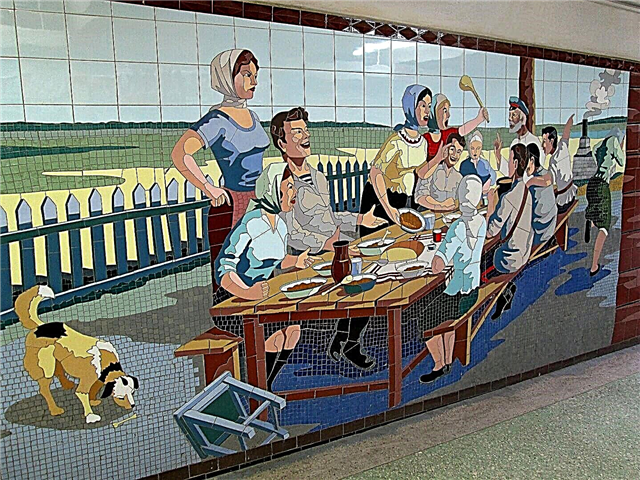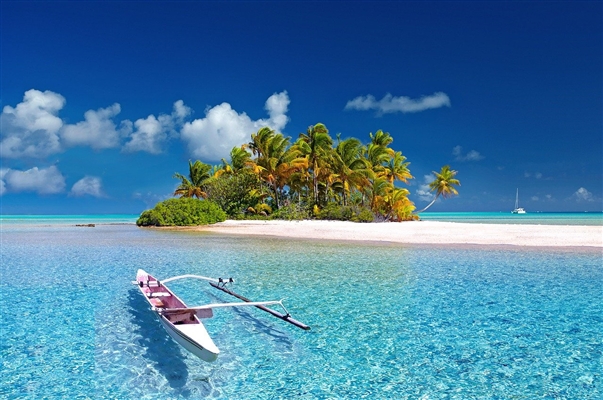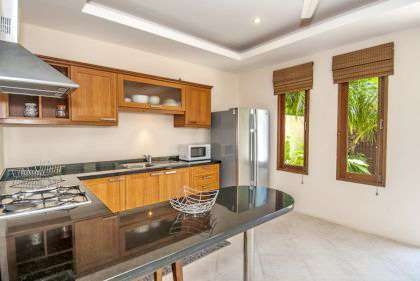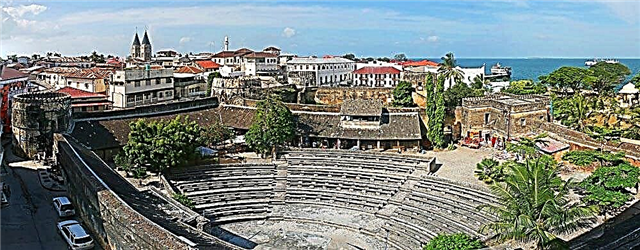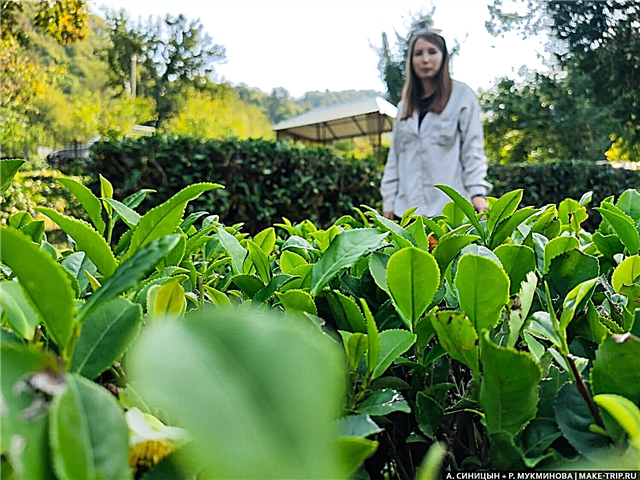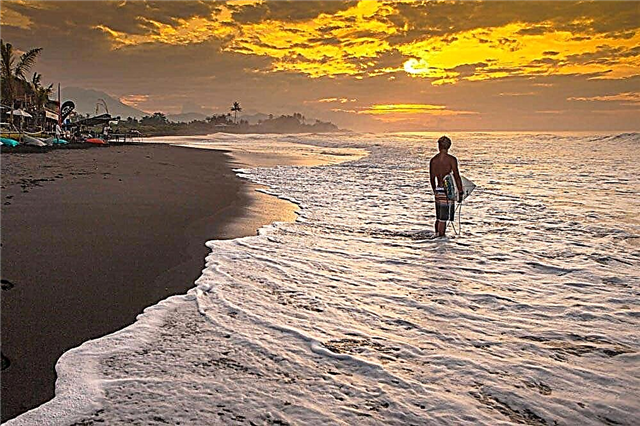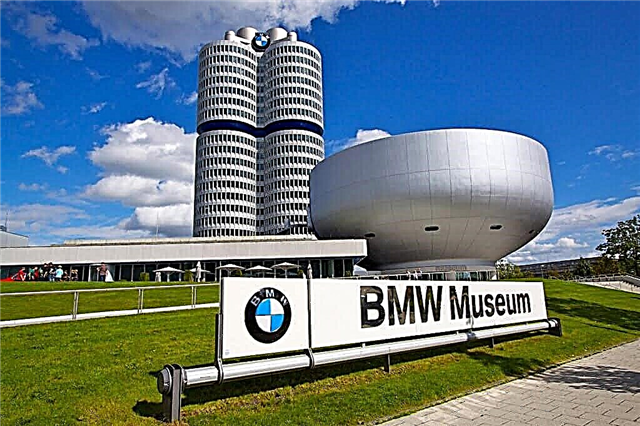Munich is the capital of the federal state called Bavaria. The city is densely populated, involved in many historical events, therefore the cultural program is rich here. 60% of buildings in Munich were destroyed during the Second World War. Some were restored, while others are now adorned with modern buildings. This situation was also reflected in museums: old collections were often moved, and specially designed sites were allocated for new ones.
A special place in the city is given to art museums. The galleries and pinakothek together attract the most tourists. The emphasis is on local artists as well as works of antique art. Of the unusual, it is worth noting the Beer and Oktoberfest Museum, as well as the Munich Residence.
The most interesting museums in Munich
List, photos with names and descriptions of museums worth visiting.
Munich residence
One of the largest palace complexes in Europe. Munich's main architectural landmark combines Gothic, Neoclassicism and Baroque. The current appearance was formed by the 19th century, and the total construction spanned over 5 centuries. On the territory of the residence there are numerous exhibitions, the State Collection of Egyptian Art, a concert hall and a theater.
Address: Residenzstrasse, 1, München
Website: residenz-muenchen.de

Bavarian national museum
The building for the exhibition was built at the end of the 19th century, almost half a century after the foundation of the museum. The ground floor displays artifacts and art objects that tell the history of Bavaria and the southern lands of Germany. Second floor - porcelain, ivory, precious metals, clocks, stained-glass windows. Ground floor - exhibitions on the theme of rural life. The museum owns the largest collection of "nativity scenes".
Address: Prinzregenten, 3, München
Website: bayerisches-nationalmuseum.d

German Museum
The world's largest museum of technology and natural history. Has been working since 1903. Funds - more than 28 thousand storage units. They represent about 50 scientific fields. In 1944, during the war, the building was destroyed by 80%. The restoration took 4 years. Since then, the museum has opened several more thematic halls. One of the stated goals of the meeting is to convey scientific truths to visitors in simple language.
Address: Museumsinsel, 1, München
Website: deutsches-museum.de

City Gallery in Lenbach House
The main art museum of the city occupied an architectural landmark - the villa of Franz von Lenbach. The construction of the complex took place at the end of the century before last. The exhibition is mainly composed of the works of artists who lived and worked in Munich. Paintings by masters from the creative association "Blue Horseman" are especially valuable. Since the 70s of the XX century, the gallery has been holding modern exhibitions.
Address: Luisen, 33, München
Website: lenbachhaus.de

Museum of the Five Continents
Until 2014 it was called the State Museum of Ethnography. More than 160 thousand exhibits tell about Africa, Asia, Oceania, South America and North America. The current building of the museum was built in the middle of the 19th century, and the collection was placed in it in 1926. The founders of the collection believe that European residents know little about the culture, traditions and history of other continents, and this gap needs to be filled.
Address: Maximilian, 42, München
Website: museum-fuenf-kontinente.de

BMW Museum
Located next to BMW headquarters. It has been open since 1972, but in the 2000s it was closed for renovation. Its goals are technical renovation and expansion of the exhibition area, which now exceeds 5000 m². The museum exhibits models of cars and motorcycles produced by the brand in different years. In addition, at the stands and during visual presentations, one can get acquainted with the company's plans for the future.
Address: Olympiapark, 2, München
Site: bmw-welt.com

FC Bayern Museum
The largest football museum in Germany. Within its walls, we are talking about the history of the club of the same name, which successfully performs both on the domestic and on the world stage. The total area of the exhibition is 3000 m². In addition to visiting the museum, you can also see the Allianz Arena, the home stadium of Bavaria. Comprehensive travel programs have been developed, there are discounts for visits for different age and social groups.
Address: Werner-Heisenberg-Allee, 25, München
Website: fcbayern.com

Old Pinakothek
This art gallery focuses on canvases painted in the Middle Ages and a little later. The first painting of the museum is "The Battle of Alexander the Great with Tsar Darius" by Altdorfer. Since the opening, the collection has been constantly replenished and now has about 700 exhibits. The building is divided into halls and offices. The interior is emphatically austere: this way visitors will not be distracted from the reason for their visit.
Address: Barer, 27, München
Website: pinakothek.de

New Pinakothek
It is one of the 3 Munich Pinakothek, which houses sculptures and paintings from different periods, starting from the Middle Ages. The new Pinakothek was founded in 1853 by Ludwig I. The exhibits here date from the 18th-19th centuries. At the same time, about 400 paintings and several dozen stouts are exhibited, although the funds are more numerous - 3000 items. The works represent different styles, schools and countries.
Address: Barer, 29, München
Website: pinakothek.de

Pinakothek of modernity
4 separate and distinctive museums are hidden under one sign. They are united by contemporary art. The Pinakothek displays collections from the Bavarian State Collection of Painting, the State Museum of Applied Arts, the Architectural Museum of the Technical University of Munich and the State Graphics Collection of Munich. Paintings by Picasso, Dali, Matisse are especially valuable.
Address: Barer, 40, München
Website: pinakothek.de

Documentation Center for the History of National Socialism
At the end of the last century, the authorities, together with historians, began developing a project to create such a museum. It was opened in 2015 to prevent modern Germans from forgetting the painful lessons of history. Through newsreels, photographs and documents, the exhibition tells about the reasons for the emergence of National Socialist ideology and the price that the whole world had to pay for it.
Address: Max Mannheimer Platz, 1, München
Website: ns-dokuzentrum-muenchen.de

Nymphenburg palace
Built in the west of the city in the middle of the 17th century. In the past, there was a line of sight between the palace and the Blutenburg castle. Now it is overgrown with trees. The most interesting parts of Nymphenburg are the palace park, the Rococo hall decorated with frescoes by Zimmermann, the Lacquer Cabinet with black and red lacquered Chinese panels and the Gallery of Beauties - portraits of 36 of the most beautiful women in Europe by Stieler.
Address: Schloss Nymphenburg, 1, München
Website: schloss-nymphenburg.de

Carriage museum
Occupies the southern wing of the Nymphenburg Palace. In addition to carriages, sledges, horse harness, and strollers are on display. All these things were made in the 17th-19th centuries. Some samples show the technical equipment of their time, others are richly decorated, and still others are as practical as possible. Thanks to the murals and the addition of precious materials, a number of carriages look more like fine art than a means of transportation.
Address: Schloss Nymphenburg, Eingang, 19, München
Website: schloss-nymphenburg.de

Museum of Nature and Man
Opened in 1990. Museum tours are designed for different age groups. A model of the solar system, dioramas on the relationship between man and nature, a collection of minerals, models showing how the human nervous system works are the most interesting objects of the exhibition. On the ground floor there is a cafe, lockers, and a shop with souvenirs, scientific books and paraphernalia related to the museum.
Address: Nymphenburg Palace, 17, München
Website: mmn-muenchen.de

Brandhorst Museum
The youngest art museum in the city. The name is derived from the surname of the founder. It was Annette Brandhorst's private collection that became the basis for the current collection. The paintings are dated to the second half of the last century. Notable are the works of Andy Warhol, Gerhard Richter, Mario Merz, as well as book illustrations by Picass.The building of the museum is to match the content, from the form to the painting of the walls.
Address: Kunstareal Theresienstrasse, 35 A, München
Website: museum-brandhorst.de

Paleontological Museum
The exhibits of the museum are fossils and archaeological finds made in Bavaria. The first exhibition opened in 1843. It featured only fossils and minerals. The rarest objects in the collection include the skeleton of the predecessor of modern birds, Archeopteryx, and the remains of a prehistoric elephant. The museum is included in popular tourist routes and due to its location: the Pinakothek and the English Garden are just a stone's throw away.
Address: Richard Wagner, 10, München
Website: bspg.palmuc.org

Munich City Museum
Has been welcoming visitors since 1888. Founder - Ernest von Destouche. The former arsenal and the adjacent stables were taken under the exposition. The museum has several sections, completely independent and capable of existing as separate exhibitions. Among them: an exhibition on the culture and history of Munich, a collection of musical instruments and puppets telling about the milestones in the development of the local puppet theater.
Address: Jakobs Platz, 1, München
Website: muenchner-stadtmuseum.de

Film Museum
Based on the territory of the Munich City Museum since 1963. The depository contains about 6,000 copies of films: from classics to modern works. The emphasis is on German paintings. The museum hosts meetings of filmmakers, thematic events, screenings of author's and foreign films. Feature films coexist with documentaries. The latter includes many projects about Munich.
Address: Lilienstrasse, 2, München
Website: museum-lichtspiele.de

Munich Glyptotek
One of the largest collections of sculpture from Ancient Greece and Ancient Rome. Glyptotek was able to cover a thousand-year period of history and culture. He initiated the creation of the museum Ludwig I. The first exhibitions were presented to the public in 1830. The Glyptotek building is the most spacious in Munich. The funds are not limited to marble and clay. The vaults have enough items made of ceramics, bronze and other materials.
Address: Königsplatz, 3, München
Website: antike-am-koenigsplatz.mwn.de

State antique collection
The collection is an amalgamation of exhibitions on the theme of ancient Roman, ancient Greek and Etruscan art. They became a museum in 1848. King Ludwig I himself collected antique artifacts, and therefore decided to found a collection. Vases and decorations are of particular hysterical and material value. The museum organizes field shows and temporarily hosts exhibits from other countries.
Address: Koenigsplatz, 1, München
Website: antike-am-koenigsplatz.mwn.de

Museum of Copies of Classical Sculpture
The creation of the museum is inextricably linked with the opening of the Department of Classical Archeology at the Ludwig-Maximilian University in 1869. The building is located close to two other collections on this subject - the Glyptotek and the State Antique Collection. Exhibits - about 1800 plaster copies of ancient Greek and Roman sculptures. The museum has a photo library with impressive funds - more than 100 thousand photographs.
Address: Katharina von Bora, 10, München
Website: abgussmuseum.de

House of art
Located on the outskirts of the English Garden. The building was built in 1937 and belongs to the examples of the architecture of the Third Reich. Adolf Hitler willingly visited the museum, bought exhibits and was known as a benefactor of German art in the early years of his reign. The House of Art does not refuse these pages of history. The premises are now used for temporary large exhibitions.
Address: Prinzregenten, 1, München
Website: hausderkunst.de

Toy Museum
Director Ivan Steiger has been collecting toys for 40 years. He agreed with the authorities to create a museum in the tower of the old town hall and donated his collection there. Rare and modern, handicraft and factory, in perfect condition and passed through restoration - all kinds of toys are not here. The excursion is designed in such a way that a visit to the museum will be interesting for both children and adults.
Address: Marienplatz, 15, München
Website: spielzeugmuseum-muenchen.de

Museum of Egyptian Art
Founded in 1970. The opening ceremony of the new building took place in 2013. Funds - 8000 items, of which 2000 exhibits are permanently exhibited. The spacious rooms are illuminated in a special style to create the right atmosphere for viewing artifacts. Tourists are primarily attracted by sculptures and sarcophagi. The museum has a cafe, shop, conference room, media room, additional premises for events.
Address: Gabelsberger, 35, München
Website: smaek.de

Villa Stuck
One of the art museums in Munich. In 1992 it was opened in the villa of the German painter and sculptor Franz von Stuck. He himself created the project of the building, which was brought to life in the last years of the 19th century. The permanent exhibition consists mainly of works by von Stuck, as well as objects of applied art from the 19th and 20th centuries. Temporary exhibitions on various topics are held in the free halls.
Address: Prinzregenten, 60, München
Website: villastuck.de

Hunting and Fishing Museum
It is not difficult to find an unusual museum: you need to focus on the sculptures of the wild boar and catfish. They are installed right in front of the entrance to the converted Augustinian church, which hosted the collection. The exhibits are dedicated to hunting and fishing of different time layers, starting from the Stone Age. Visitors are offered not only to inspect the skulls of ancient animals, but also to participate in interactive fishing.
Address: Neuhauser, 2, München
Website: jagd-fischerei-museum.de

Beer and Oktoberfest Museum
Location - a 14th century mansion. Oktoberfest is a world famous beer festival. For a very long time he did not have a museum in his honor, but in 2005 the misunderstanding was corrected. Visitors are told about the history of beer brewing and folk festivals associated with the foamy drink. There is a restaurant on the ground floor. Each visitor to the museum receives a coupon for a beer and a traditional German snack along with a ticket.
Address: Sternecker, 2, München
Website: bier-und-oktoberfestmuseum.de

ESO Supernova Planetarium & Community Center
Inaugurated in 2018. The planetarium began its work several years earlier. There is a scientific town nearby. The center lives without attracting public funds, so it must earn on its own. In addition to selling tickets for some programs, the administration rents out part of the space for temporary exhibitions and events. Shows in the planetarium are unusual, which is why tourists are so popular.
Address: Karl-Schwarzschild, 2, München
Website: supernova.eso.org

Shaka Gallery
It is a member of the association under the name "Bavarian State Paintings Collections". The basis of the museum is the collection of paintings by Count von Schack. He supported local artists, sometimes buying up paintings just to help them financially and not infringe on pride. Ironically, over time, many canvases have become very valuable. The gallery presents, among others, paintings by Anselm Feuerbach, Karl Spitzweg, Arnold Becklin.
Address: Prinzregenten, 9, München
Website: pinakothek.de

Jewish Museum
In the 1920s, the chairman of the Jewish community, Hans Lamm, decided to create a museum in Munich. His idea was realized only in 2007. There are few permanent exhibits here. The collection is based in the Jewish Center, built in 2006. The building has a library, lecture halls, areas for temporary exhibitions. All of this is invariably associated with the culture, history and religion of the Jews.
Address: Jakobs Platz, 16, München
Website: juedisches-museum-muenchen.de

Empire of Crystals
The museum is located in the building of the University of Munich. This quarter is called artistic. Part of the exhibition is on display in the display cases in the lobby. The rest - directly in the halls specially designated for "crystals". Noble metals, meteorites, precious stones are the basis of the exhibition. In addition, visitors are shown man-made masterpieces and the mechanics of some scientific processes are explained.
Address: Theresien, 41, München
Website: mineralogische-staatssammlung.de

Museum of Urban and Contemporary Art (MUCA)
One of the youngest museums in the city was founded in 2016 by the collector Christian Utz. Its mission is to better integrate street art into the art world. Representatives of different trends and styles are collected under one roof.The most notable are the graffiti of the mysterious British Banksy, the creations of the American designer Shepard Fairey, as well as the daring experiments of the Brazilian brothers, who create their masterpieces under the name "Os Gemeos".
Address: Hotter, 12, München
Website: muca.eu

Alpine museum
The opening ceremony of this museum in 2011 was attended by members of the royal family and government ministers. The creation of the exposition was associated with the peak of the popularity of sport climbing in the mountains in Europe. The focus of the Alps collection, but in addition, the exhibitions tell about the history of mountaineering in general, and also showcase paintings and graphics. Next to the museum is the Isar cafe and a garden.
Address: Praterinsel, 5, München
Website: alpenverein.de

Zoological State Collection
The history of the museum dates back to 1807. This makes it one of the oldest natural history ones in Europe. The funds amount to about 20 million zoological objects, divided into thematic sections. Among them is the world's largest collection of butterflies. Exhibits come here thanks to expeditions and scientific research, as there is a museum at the research institute.
Address: Münchhausen, 21, München
Website: zsm.mwn.de

Archaeological State Collection
Opened in 1885. Here visitors are invited to learn the history of Bavaria from the Stone Age to the present day. Archaeological finds are the main exhibits of the exhibition. They are complemented by photographs, graphic works, documents, objects of decorative and applied art. The museum also has its own treasury. It contains not only German values, but also artifacts brought from the Middle East and the Mediterranean.
Address: Himbsel, 1, München
Website: archaeologie-bayern.de



